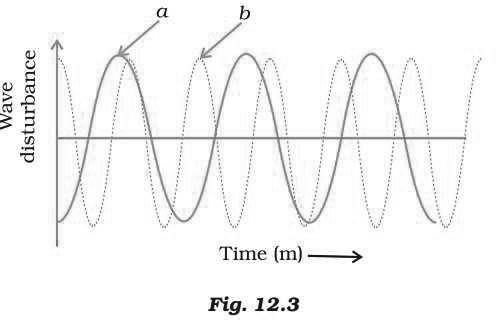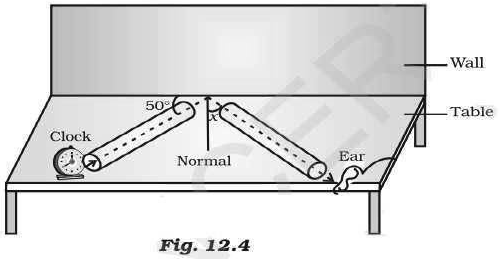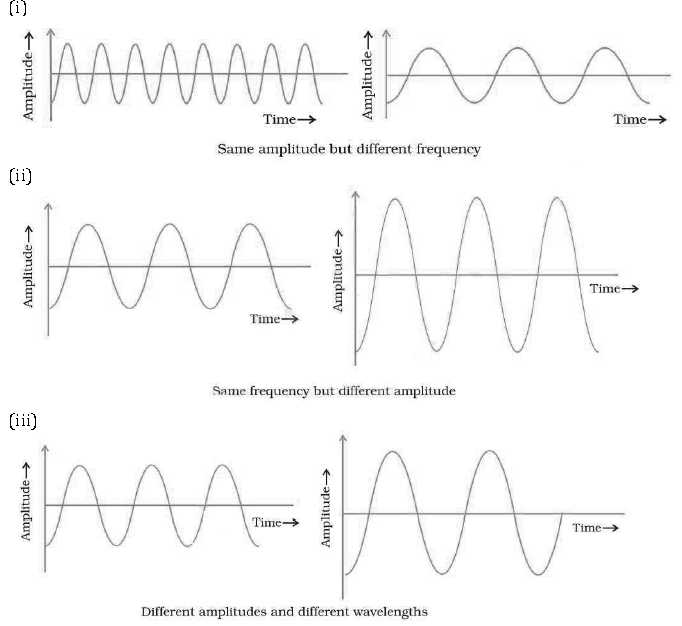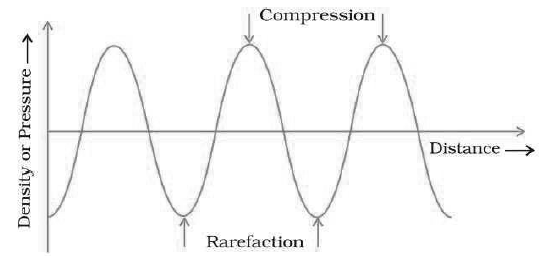Read and download free pdf of CBSE Class 9 Physics Sound Worksheet Set C. Students and teachers of Class 9 Science can get free printable Worksheets for Class 9 Science Chapter 11 Sound in PDF format prepared as per the latest syllabus and examination pattern in your schools. Class 9 students should practice questions and answers given here for Science in Class 9 which will help them to improve your knowledge of all important chapters and its topics. Students should also download free pdf of Class 9 Science Worksheets prepared by teachers as per the latest Science books and syllabus issued this academic year and solve important problems with solutions on daily basis to get more score in school exams and tests
Worksheet for Class 9 Science Chapter 11 Sound
Class 9 Science students should download to the following Chapter 11 Sound Class 9 worksheet in PDF. This test paper with questions and answers for Class 9 will be very useful for exams and help you to score good marks
Class 9 Science Worksheet for Chapter 11 Sound
Question: Sound travels in air if
a) particles of medium travel from one place to another
b) there is no moisture in the atmosphere
c) disturbance moves
d) both particles as well as disturbance travel from one place to another
Answer: c
Question: In the curve (Fig.12.1) half the wavelength is
a) AB
b) BD
c) DE
d) AE
Answer: b
Question: Before playing the orchestra in a musical concert, a sitarist tries to adjust the tension and pluck the string suitably. By doing so, he is adjusting
a) intensity of sound only
b) amplitude of sound only
c) frequency of the sitar string with the frequency of other musical instruments
d) loudness of sound
Answer: c
Question: Note is a sound
a) of mixture of several frequencies
b) of mixture of two frequencies only
c) of a single frequency
d) always unpleasant to listen
Answer: a
Question: When we change feeble sound to loud sound we increase its
a) frequency
b) amplitude
c) velocity
d) wavelength
Answer: b
Question: Infrasound can be heard by
a) dog
b) bat
c) rhinoceros
d) human beings
Answer: c
Question: A key of a mechanical piano struck gently and then struck again but much harder this time. In the second case
a) sound will be louder but pitch will not be different
b) sound will be louder and pitch will also be higher
c) sound will be louder but pitch will be lower
d) both loudness and pitch will remain unaffected
Answer: a
Question: In SONAR, we use
a) ultrasonic waves
b) infrasonic waves
c) radio waves
d) audible sound waves
Answer: a
Question: Earthquake produces which kind of sound before the main shock wave begins
a) ultrasound
b) infrasound
c) audible sound
d) none of the above
Answer: b
Question: The given graph (Fig.12.2) shows the displacement versus time relation for a disturbance travelling with velocity of 1500 ms–1. Calculate the wavelength of the disturbance.
Answer: From the graph
Time period, T = 2 × 10-6 s.
Frequency, v = 1/T = 5 × 105 Hz.
Wavelength, λ =u / v = 5×10 m.
Question:Which of the two graphs (a) and (b) (Fig.12.3) representing the human voice is likely to be the male voice? Give reason for your Answer:
Answer: Graph (a) represents the male voice. Usually the male voice has less pitch (or frequency) as compared to female.

Question: Why do we hear the sound produced by the humming bees while the sound of vibrations of pendulum is not heard?
Answer: Humming bees produce sound by vibrating their wings which is in the audible range. In case of pendulum the frequency is below 20 Hz which does not come in the audible range.
Question: A girl is sitting in the middle of a park of dimension 12 m × 12 m. On the left side of it there is a building adjoining the park and on right side of the park, there is a road adjoining the park. A sound is produced on the road by a cracker. Is it possible for the girl to hear the echo of this sound? Explain your Answer:
Answer: If the time gap between the original sound and reflected sound received by the listener is around 0.1 s, only then the echo can be heard. The minimum distance travelled by the reflected sound wave for the distinctly listening the echo.
= velocity of sound × time interval
344× 0.1
34.4m
But in this case the distance travelled by the sound reflected from the building and then reaching to the girl will be (6 + 6) = 12 m, which is much smaller than the required distance. Therefore, no echo can be heard.
Question: Sound produced by a thunderstorm is heard 10 s after the lightning is seen. Calculate the approximate distance of the thunder cloud. (Given speed of sound = 340 ms–1.)
Answer: Speed of sound = 340 m/s and time = 10 s
Distance = speed × time = 340 × 10 = 3400 m
Question: For hearing the loudest ticking sound heard by the ear, find the angle x in the Fig.12.4.

Answer: Incident line is making an angle of 50o with reflecting surface.
So, angle of incidence = 90o – 50o = 40o
Angle of reflection = angle of incidence
Hence, ∠x = 40o
Question: Why is the ceiling and wall behind the stage of good conference halls or concert halls made curved?
Answer: Ceiling and walls are made curved so that sound after reflection reaches the target audience.
Question: If any explosion takes place at the bottom of a lake, what type of shock waves in water will take place?
Answer: Longitudinal waves; because sound waves are longitudinal waves.
Question: Represent graphically by two separate diagrams in each case
(i) Two sound waves having the same amplitude but different frequencies?
(ii) Two sound waves having the same frequency but different amplitudes.
(iii) Two sound waves having different amplitudes and also different wavelengths.
Answer: (i)

Question: Draw a curve showing density or pressure variations with respect to distance for a disturbance produced by sound. Mark the position of compression and rarefaction on this curve. Also, define wavelengths and time-period using this curve.
Answer:

Wavelength is the distance between two consecutive compressions or two consecutive rarefactions. Time period is the time taken to travel the distance between any two consecutive compressions or rarefactions from a fixed point.
Question: Establish the relationship between speed of sound, its wavelength and frequency. If velocity of sound in air is 340 ms–1, calculate
(i) wavelength when frequency is 256 Hz.
(ii) frequency when wavelength is 0.85 m.
Answer: Derivation of formula u = vλ.
(i) 340 = 256λ
λ= 1.33m.
(ii) 340 = v (0.85)
v = 400Hz
| CBSE Class 9 Chemistry Matter In Our Surrounding Worksheet Set A |
| CBSE Class 9 Chemistry Matter In Our Surrounding Worksheet Set B |
| CBSE Class 9 Chemistry Is Matter Around Us Pure Worksheet Set A |
| CBSE Class 9 Chemistry Is Matter Around Us Pure Worksheet Set B |
| CBSE Class 9 Physics Motion Worksheet Set A |
| CBSE Class 9 Physics Motion Worksheet Set B |
| CBSE Class 9 Physics Gravitation Worksheet Set A |
| CBSE Class 9 Physics Gravitation Worksheet Set B |
| CBSE Class 9 Physics Work And Energy Worksheet Set A |
| CBSE Class 9 Physics Work And Energy Worksheet Set B |
| CBSE Class 9 Physics Sound Worksheet Set A |
| CBSE Class 9 Physics Sound Worksheet Set B |
| CBSE Class 9 Physics Sound Worksheet Set C |
| CBSE Class 9 Biology Why Do We Fall Ill Worksheet Set A |
| CBSE Class 9 Biology Why Do We Fall Ill Worksheet Set B |
| CBSE Class 9 Biology Why Do We Fall Ill Worksheet Set C |
| CBSE Class 9 Biology Natural Resources Worksheet Set A |
| CBSE Class 9 Biology Natural Resources Worksheet Set B |
| CBSE Class 9 Biology Natural Resources Worksheet Set C |
Worksheet for CBSE Science Class 9 Chapter 11 Sound
We hope students liked the above worksheet for Chapter 11 Sound designed as per the latest syllabus for Class 9 Science released by CBSE. Students of Class 9 should download in Pdf format and practice the questions and solutions given in the above worksheet for Class 9 Science on a daily basis. All the latest worksheets with answers have been developed for Science by referring to the most important and regularly asked topics that the students should learn and practice to get better scores in their class tests and examinations. Expert teachers of studiestoday have referred to the NCERT book for Class 9 Science to develop the Science Class 9 worksheet. After solving the questions given in the worksheet which have been developed as per the latest course books also refer to the NCERT solutions for Class 9 Science designed by our teachers. We have also provided a lot of MCQ questions for Class 9 Science in the worksheet so that you can solve questions relating to all topics given in each chapter.
You can download the CBSE Printable worksheets for Class 9 Science Chapter 11 Sound for latest session from StudiesToday.com
There is no charge for the Printable worksheets for Class 9 CBSE Science Chapter 11 Sound you can download everything free
Yes, studiestoday.com provides all latest NCERT Chapter 11 Sound Class 9 Science test sheets with answers based on the latest books for the current academic session
CBSE Class 9 Science Chapter 11 Sound worksheets cover all topics as per the latest syllabus for current academic year.
Regular practice with Class 9 Science worksheets can help you understand all concepts better, you can identify weak areas, and improve your speed and accuracy.

